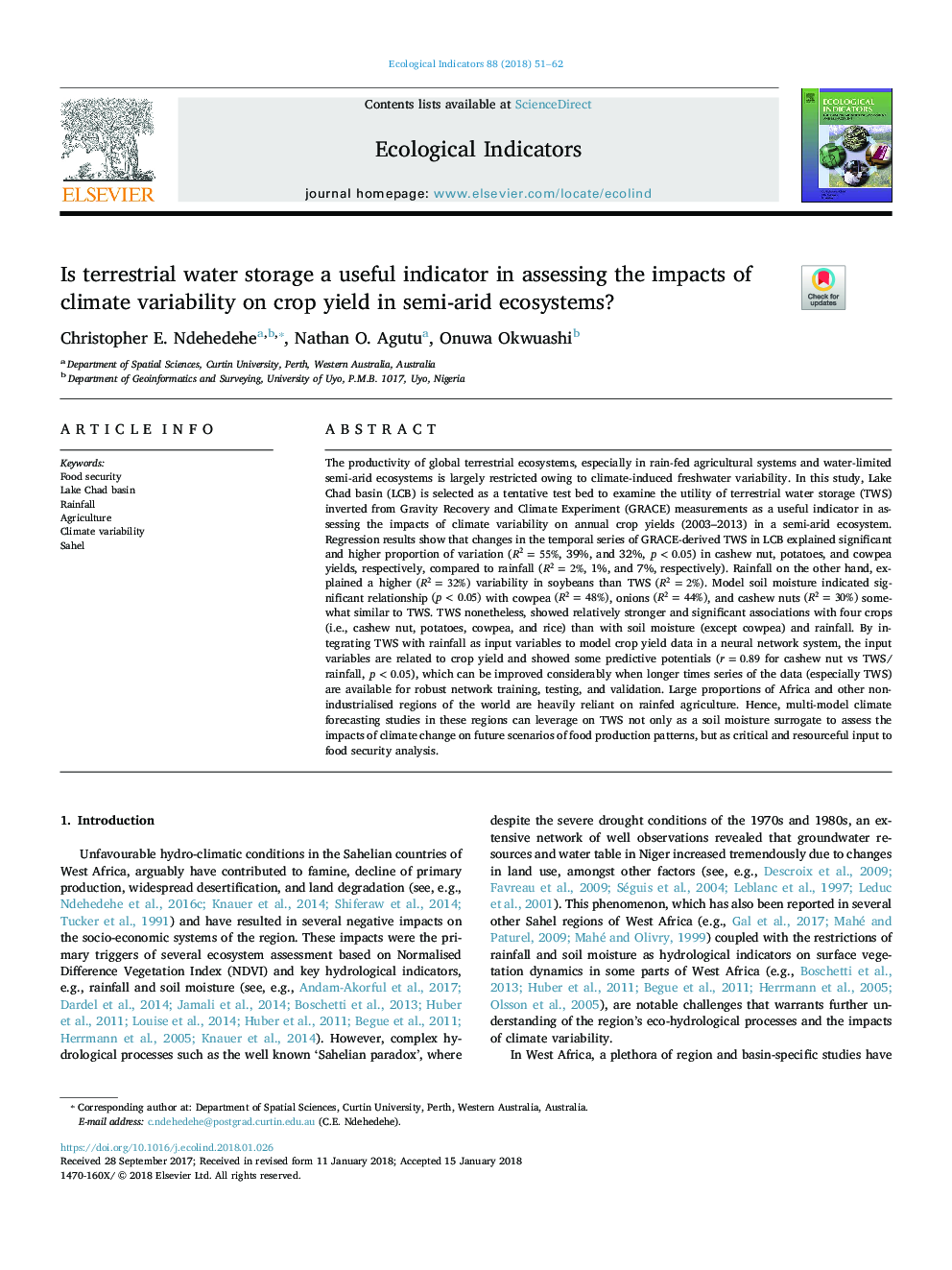| Article ID | Journal | Published Year | Pages | File Type |
|---|---|---|---|---|
| 8845549 | Ecological Indicators | 2018 | 12 Pages |
Abstract
The productivity of global terrestrial ecosystems, especially in rain-fed agricultural systems and water-limited semi-arid ecosystems is largely restricted owing to climate-induced freshwater variability. In this study, Lake Chad basin (LCB) is selected as a tentative test bed to examine the utility of terrestrial water storage (TWS) inverted from Gravity Recovery and Climate Experiment (GRACE) measurements as a useful indicator in assessing the impacts of climate variability on annual crop yields (2003-2013) in a semi-arid ecosystem. Regression results show that changes in the temporal series of GRACE-derived TWS in LCB explained significant and higher proportion of variation (R2=55%, 39%, and 32%, p<0.05) in cashew nut, potatoes, and cowpea yields, respectively, compared to rainfall (R2=2%, 1%, and 7%, respectively). Rainfall on the other hand, explained a higher (R2=32%) variability in soybeans than TWS (R2=2%). Model soil moisture indicated significant relationship (p<0.05) with cowpea (R2=48%), onions (R2=44%), and cashew nuts (R2=30%) somewhat similar to TWS. TWS nonetheless, showed relatively stronger and significant associations with four crops (i.e., cashew nut, potatoes, cowpea, and rice) than with soil moisture (except cowpea) and rainfall. By integrating TWS with rainfall as input variables to model crop yield data in a neural network system, the input variables are related to crop yield and showed some predictive potentials (r=0.89 for cashew nut vs TWS/rainfall, p<0.05), which can be improved considerably when longer times series of the data (especially TWS) are available for robust network training, testing, and validation. Large proportions of Africa and other non-industrialised regions of the world are heavily reliant on rainfed agriculture. Hence, multi-model climate forecasting studies in these regions can leverage on TWS not only as a soil moisture surrogate to assess the impacts of climate change on future scenarios of food production patterns, but as critical and resourceful input to food security analysis.
Related Topics
Life Sciences
Agricultural and Biological Sciences
Ecology, Evolution, Behavior and Systematics
Authors
Christopher E. Ndehedehe, Nathan O. Agutu, Onuwa Okwuashi,
